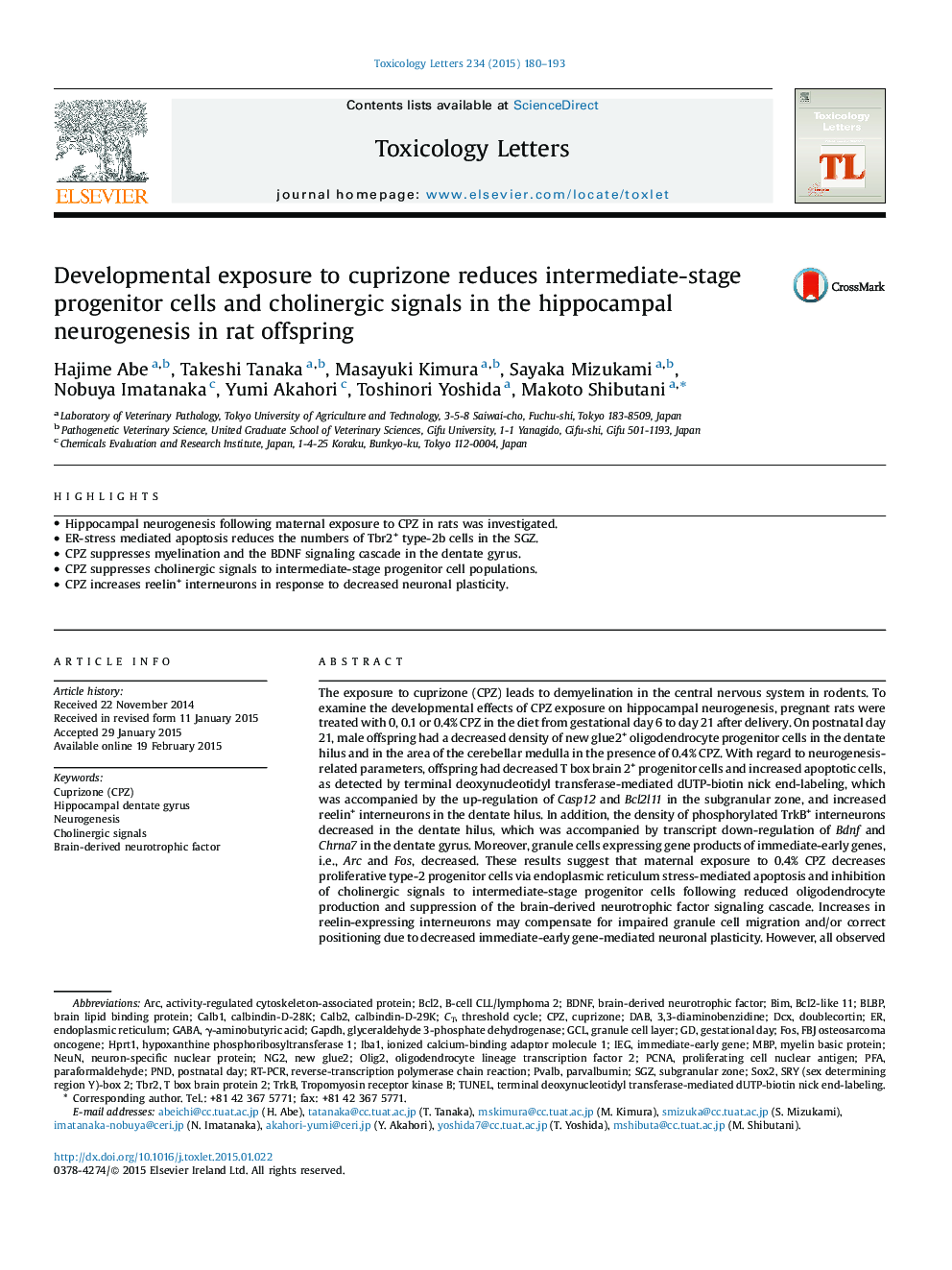| Article ID | Journal | Published Year | Pages | File Type |
|---|---|---|---|---|
| 2598815 | Toxicology Letters | 2015 | 14 Pages |
•Hippocampal neurogenesis following maternal exposure to CPZ in rats was investigated.•ER-stress mediated apoptosis reduces the numbers of Tbr2+ type-2b cells in the SGZ.•CPZ suppresses myelination and the BDNF signaling cascade in the dentate gyrus.•CPZ suppresses cholinergic signals to intermediate-stage progenitor cell populations.•CPZ increases reelin+ interneurons in response to decreased neuronal plasticity.
The exposure to cuprizone (CPZ) leads to demyelination in the central nervous system in rodents. To examine the developmental effects of CPZ exposure on hippocampal neurogenesis, pregnant rats were treated with 0, 0.1 or 0.4% CPZ in the diet from gestational day 6 to day 21 after delivery. On postnatal day 21, male offspring had a decreased density of new glue2+ oligodendrocyte progenitor cells in the dentate hilus and in the area of the cerebellar medulla in the presence of 0.4% CPZ. With regard to neurogenesis-related parameters, offspring had decreased T box brain 2+ progenitor cells and increased apoptotic cells, as detected by terminal deoxynucleotidyl transferase-mediated dUTP-biotin nick end-labeling, which was accompanied by the up-regulation of Casp12 and Bcl2l11 in the subgranular zone, and increased reelin+ interneurons in the dentate hilus. In addition, the density of phosphorylated TrkB+ interneurons decreased in the dentate hilus, which was accompanied by transcript down-regulation of Bdnf and Chrna7 in the dentate gyrus. Moreover, granule cells expressing gene products of immediate-early genes, i.e., Arc and Fos, decreased. These results suggest that maternal exposure to 0.4% CPZ decreases proliferative type-2 progenitor cells via endoplasmic reticulum stress-mediated apoptosis and inhibition of cholinergic signals to intermediate-stage progenitor cells following reduced oligodendrocyte production and suppression of the brain-derived neurotrophic factor signaling cascade. Increases in reelin-expressing interneurons may compensate for impaired granule cell migration and/or correct positioning due to decreased immediate-early gene-mediated neuronal plasticity. However, all observed fluctuations disappeared at the adult stage, suggesting that CPZ-induced developmental neurotoxicity was reversible.
